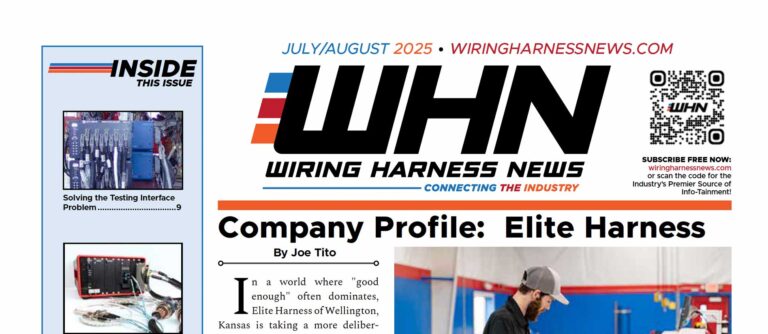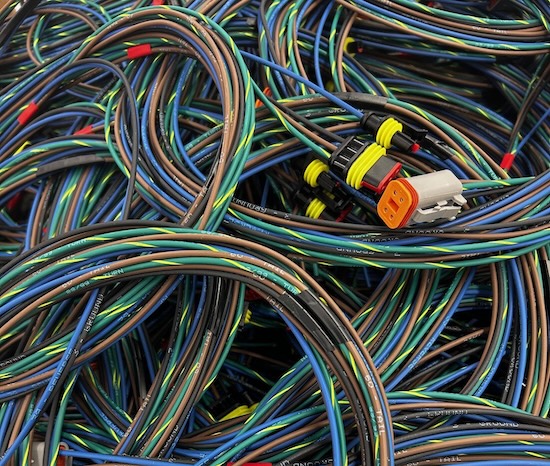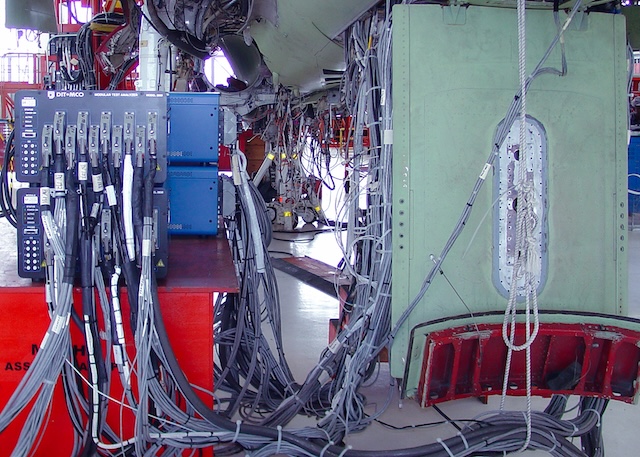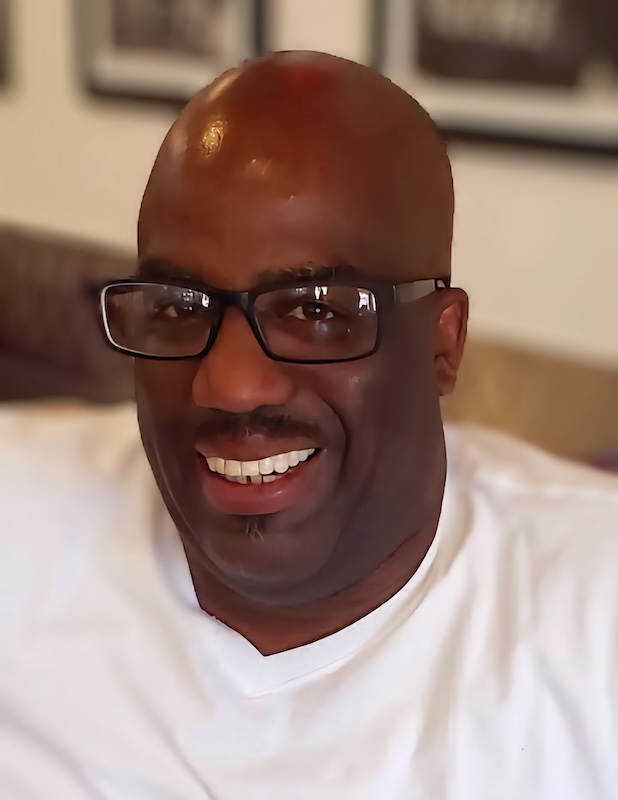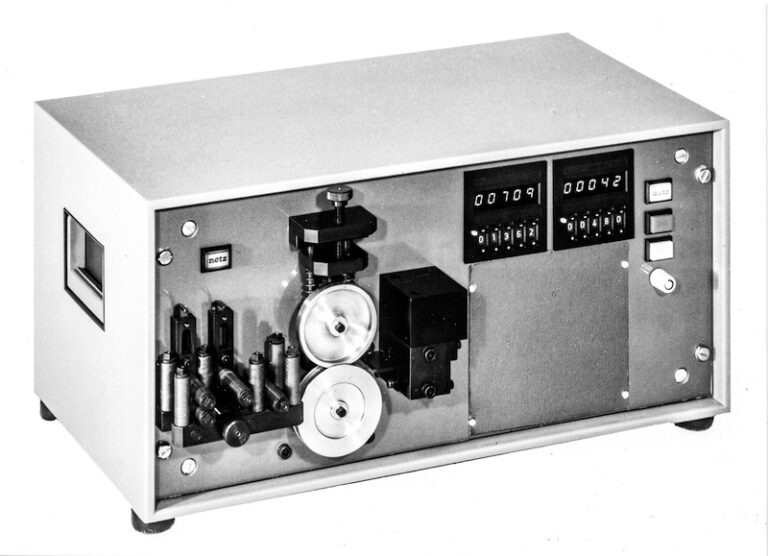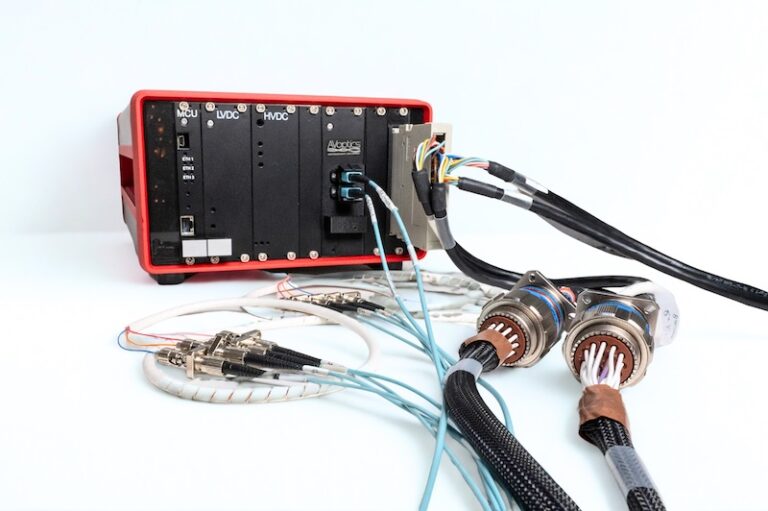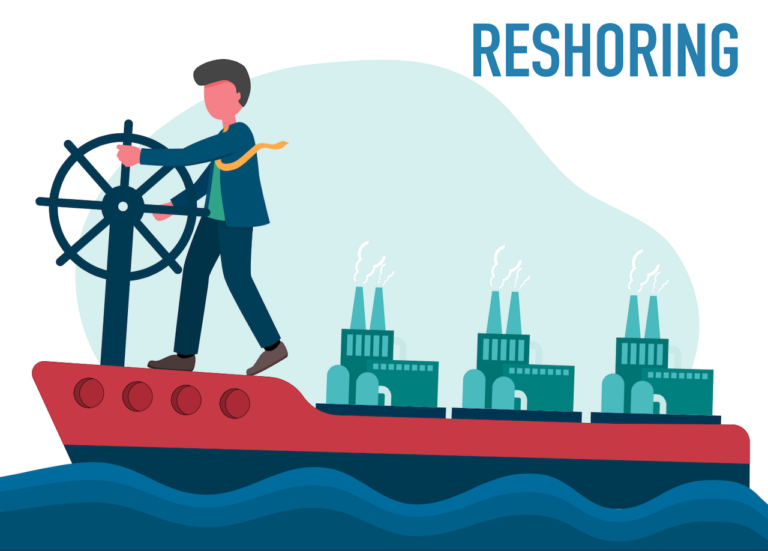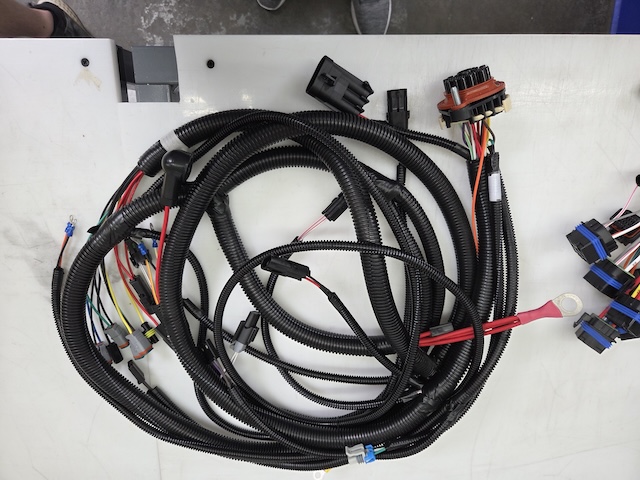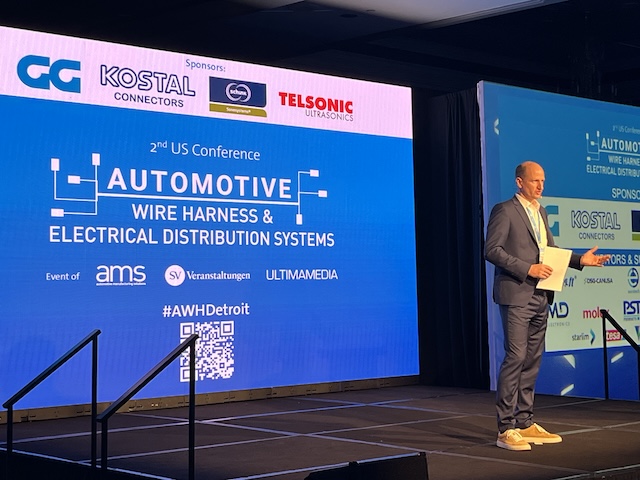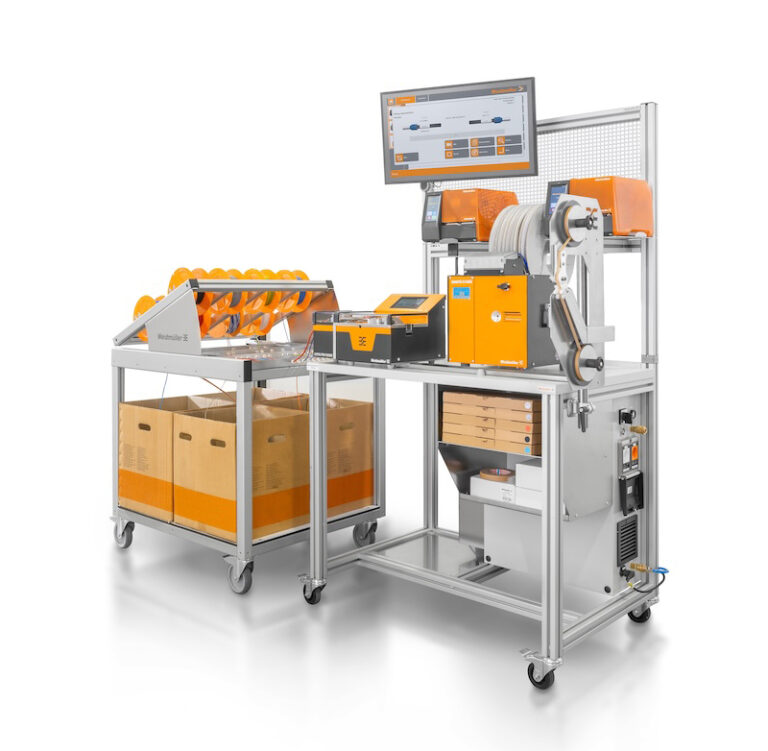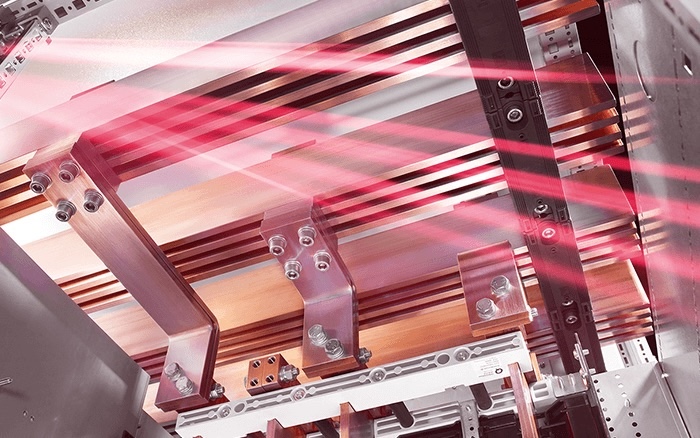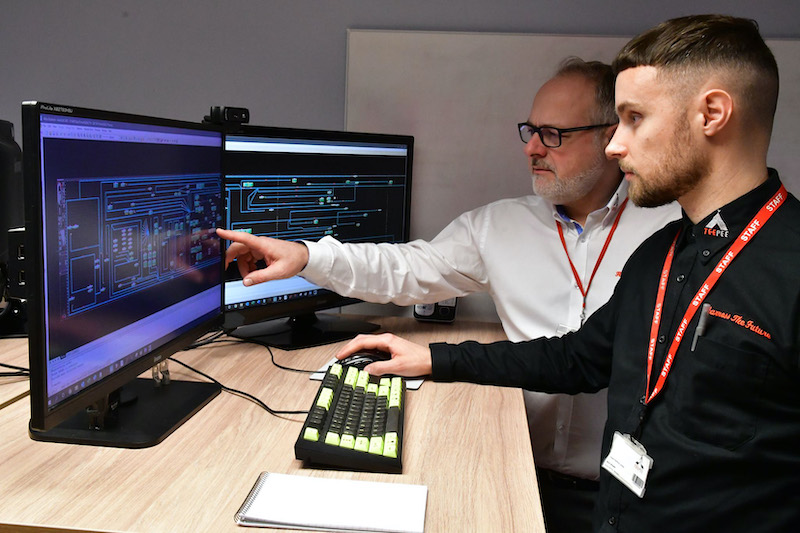In a press release in the May/June issue of Wiring Harness News, UK harness manufacturer Teepee Electrical announced a contract to build harnesses for RBW Electric Cars. RBW builds ‘future classic’ electric cars using classic British body shells manufactured to the original specifications. It sounded like some exciting things were going on at the company, so I reached out to their media agent, Russ Cockburn, to see if they would be interested in being highlighted in this issue. Russ set up a conversation with Steve Clarke, Managing Director, and Nick Bryant, Engineering Manager at Teepee Electrical.
Steve began talking about the history of the company. “It was originally formed in the West Midlands town of Bloxwich in the 1980s and was very much aligned with the bus industry back when they were built in Birmingham. The three business partners then got involved with the rail industry, the London Underground and the Channel Tunnel projects.” The business sold to one of its largest customers. Then, in 2002, it was taken back into private ownership. “That’s when I stepped into the business,” Steve chronicled.
The company worked hard to reestablish its reputation in the bus, blue light (police fire, and rescue vehicles), and rail industries. It has always operated within about a 3-mile radius of their current location. “Nick has been with the business for 16 years, but we’ve got employees who have been with us for the full 31-year existence, which is great,” Steve exclaimed.
Since 2002, Teepee has invested in equipment and process tools that have allowed them to leapfrog ahead of their competitors. “We invested in harness manufacturing software which wasn’t typical of a business our size,” Steve said. Ten years ago, the company invested in an MRP/ERP system called ProgressPlus. “That was done on the back of a particular opportunity in the rail industry requiring a level of traceability not needed for the other sectors we were serving. Our most recent investment was our move to Arcadia Harness Design last year. All of this has enabled the growth that we’ve seen and the market position that we now have.”
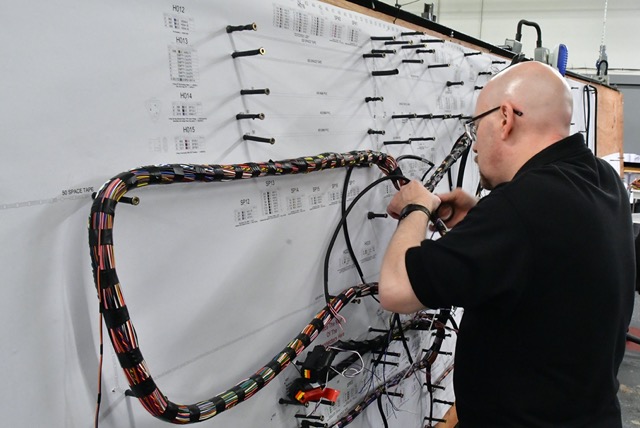
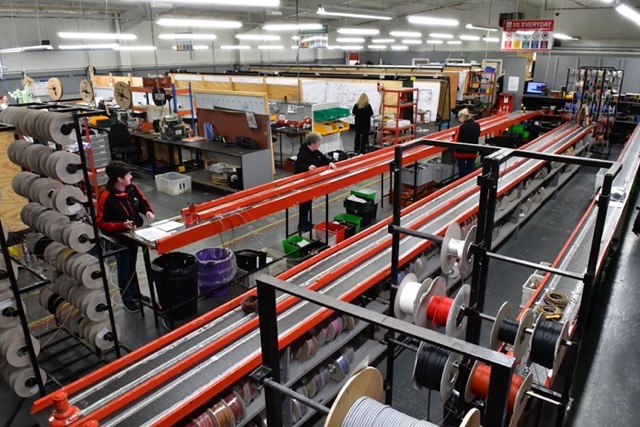
It was interesting that Steve and Nick emphasized their investment in systems rather than just equipment to give Teepee a competitive edge. It has enabled them to handle a wide variety of opportunities and highlights their approach to business. “We happen to make wiring harnesses, but what we actually sell is time. Everything we do is an application of minutes per wire, and how to best apply that.” He reiterated whether it be through an element of automation, or being able to efficiently allocate resources, what they are really selling is time.
Steve explained more about the manufacturing mix at Teepee. “In terms of where we sit now, we’re not a catchall business, but we do cover quite a wide breadth. We are doing some low-volume assemblies that are very high in complexity. We do medium-volume at medium to high complexity, and we do very high-volume assemblies that are lower in complexity.” At the low-volume end, Steve described an assembly with 700+ wires with a high degree of connectivity and complexity. The volume there may be one or two. At the other extreme is an OEM automotive grounding cable with a schedule of 22,000 each month. “Wherever there’s a wire or connector we could possibly be involved.”
Nick jumped in saying, “With one of the high-volume contracts, I think it’s safe to say that when they came to us, we thought we would never be able to compete with Eastern European harness houses.” But as he and the team looked at how they could streamline the process with semi-automated equipment and custom test fixtures, they were able to fine tune their minutes per wire. “Certain projects do require us to determine just how much automation we can bring into it.” Nick outlined. “Then on the flip-side, with the larger harnesses we do, a lot of that can’t be automated just because of the sheer length of cables. There’s still a lot of manual cutting and processing of cables.” Steve then noted, “To this day we still have an array of competitors in the UK that don’t have a fully-fledged harness manufacturing software system. For us the software was a key investment that has really enabled us to continue in progress in the business.”
Like many of the businesses we profile, Teepee Electrical can bring great value to the table in the early stages of a new program or harness design. “We are not designers by our ISO certificate, but we do offer a great deal of ‘return on experience’. We do get involved in many grassroots projects. The customer has an idea, and we will spend a lot of time with them, even to the point of hardwiring it see how it can be done, and then create a drawing from that,” Nick explained.
Steve reiterated that a lot of that expertise lies within using a robust design product like Arcadia, which he asserts is very intuitive. “The database is checking to see if you’ve got the right size terminals for that particular wire. It checks to make sure you’ve got the right connector, and if there are 500 wires, it verifies you have 1000 ends. It’s got many safety nets, so whether a customer gives us a drawing or a sample to reverse engineer, we have a standard process that adds value to that relationship.”
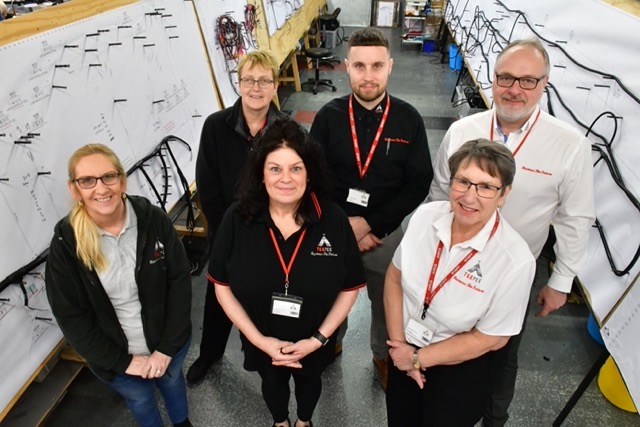
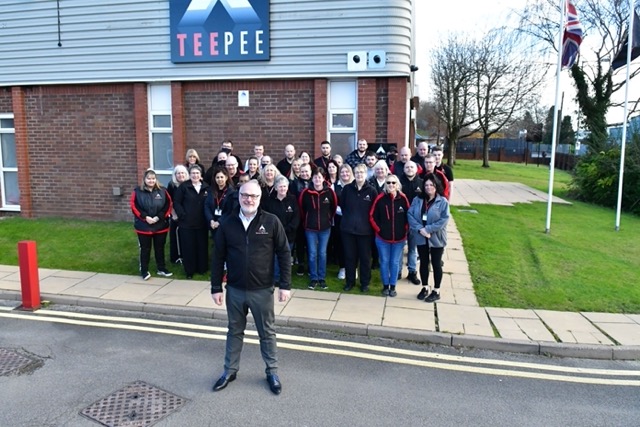
Steve added more detail on the typical process. “Nick and his team will determine the most densely populated area of the harness. So, if we have a harness with a very large 100-cavity connector, we will start at that point. When we present that to the harness software it’s already grouped in the best possible manner to reveal the manual labor needed. It enables us to get our minutes per wire determined because that’s the element that you can’t automate.”
The discussion turned to ways Teepee funnels in new opportunities. “It’s predominantly word of mouth but we’ve got a very strong ‘front of house’ in terms of our website. We’ve invested in it continually over the years to properly show what our team can do. I think it’s fair to say that whether we get an opportunity through an introduction or through the website, once we engage, we typically move that relationship forward. With the value we can add, we can typically secure that business.” Steve noted that when a particular piece of business drops out, it’s through natural attrition—like a contract fulfilled or a program ending—not from losing it to a competitor.”
Teepee just finished a fiscal financial period and Steve mentioned the business grew by 30%. “I’d like to say that was all by design. We set a target of a little over 10% but the market curve has allowed us to do more.” Steve admitted that some of that growth is cyclical as they were involved in some programs that were on an 18-month cycle. With some of those programs they ramp up to supply and then back off. But he also stressed their market position has allowed them to engage in new opportunities beyond their forecast.
The company has 58 employees and operates in 10,500 ft.² at their main facility. Within the past 12 months the company added a second 7500 ft.² site located in Aldridge, just 6 miles from their current facility. “It’s like working on a job here because Nick and I can look on ProgressPlus and see what jobs they’re working on. Within the coming weeks, we will be adding more business into that facility. That should enable us to double in size through current market opportunities alone.” Steve mentioned that another key customer may have them establishing an offshore presence in the very near future. “We absolutely intend to invest and grow with the markets we serve.”
Asked about their salesforce, Steve quickly said, “You’re looking at it.” Over the years, Teepee has had many conversations about putting a salesperson on the road. “I think the reality is the opportunities coming through the door might be so rapid that we wouldn’t be able to handle them. An even more important consideration would be: are they the right type of opportunities?” Nick seemed confident that beefing up their engineering team and having the ability to work directly with designers is money much better spent. “You go into a business and sit with an engineer in a certain section, and someone will walk past and say ‘oh, you do wire looms’? Because they know you’re doing business in the same building, they feel confident you can deliver a quality product in a good timeframe.”
I asked Steve and Nick what makes them an unmistakable supplier. “I think its reliability and flexibility,” Nick quickly stated. “A lot of customers will come to us with tight deadlines and designs that aren’t firm. We’ll get involved and really bend over backwards to ensure we can deliver that product. I think that’s paid dividends along the way with customers new and old.”
Steve added, “Thirty percent growth was probably essential just to be able to invest in the business. The fact is you have to pedal faster to stand still in this sector. I think it’s important to under-promise and over-deliver. But if somebody’s put in a place of pressure, we will go the extra yard.”
Many thanks to Steve and Nick for taking the time to discuss Teepee Electrical. We hope to hear more from them in the future. If you’d like to take a look at a great website, check out teepeeelectrical.co.uk.


